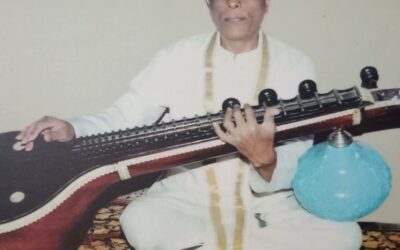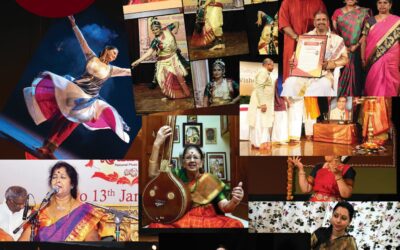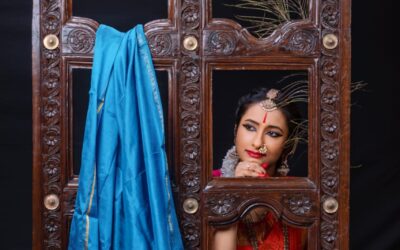Chapter 1
Rudrapatna – Karnataka’s green and music belt
Ranjani Govind
Photos by Rudrapatnam S. Ramakanth
This is the land of Cauvery, the river flowing in a copious stream, melodious in its rhythm, the waves gently sluicing on to the lush green shores, the surrounding green belt resonating with the chirping of thefeathered flock, the rich flora serving as their grand residences. Music is certainly in the air, almost palpable, even for the unlettered, the uninitiated. It is almost as if the village was explicitly created to nourish, nurture and propagate naada in infinite ways, its genius residents serving as not just its vidwans, but as torch-bearers for the unending future generations. After all, it was vocalist Tiger Varadachari, who was brought to Rudrapatana by violinist R.K. Venkatrama Sastry in the early 1900s and on seeing the prevalent atmosphere of music there, he exclaimed, “What Tanjavur is to Tamil country, Rudrapatna is to the Kannada Nadu.”
‘Sangeetha GramakkeDaari’ (Way to Village of Music) says a board when we approach the road to Rudrapatna from the Mysore-Hassan highway as our car slowly steers towards a practically nondescript village steeped in countrified makeup. The board certainly seemed unusual and rare. However intrinsic the association with music has been, we have not heard of any place being referred to with a board reading as ‘Sangeetha Grama’ anywhere in India. But music being native and inherent to its nucleus, the reference is not surprising, rather an honour that Rudrapatna earned for itself. Senior musicians in the nearby Mysore, Hassan and Chikmagalur belts in the last few centuries had constantly referred to it as the Sangeetha Grama.
 Many senior musicians and musicologists aver that for the royal patrons of the Mysore Palace, selecting Court musicians and Palace performers became an easier task when musicians who earned an ‘authorization’ from the Vidwans at Rudrapatna were considered.
Many senior musicians and musicologists aver that for the royal patrons of the Mysore Palace, selecting Court musicians and Palace performers became an easier task when musicians who earned an ‘authorization’ from the Vidwans at Rudrapatna were considered.
Such was the level of scholarly fare and musical standing that to get a nod from the Vidwans assembled there was no mean task! It is only fair that such a board helped in seeing the village permanently be reminiscent with music. So, to keep the coming generations informed about the history associated with Rudrapatna, ‘Sangeetha GramakkeDaari’ put up in the early 1980s ensured that history was revered and constantly reminded.
The recently built Saptaswara Dhyana Mandira at Rudrapatna is on a 13,000 sq.ft. land that opens aesthetically with a generous variety of greenery. The building itself is curiously shaped in the form of a Tambura, the seven swaras of music represented with seven Gopuras, with the idols of saint-composers placed inside. With the RudrapatnaSageethotsava Samithi formed in 2002, the hall attracts musicians from all over, apart from several music festivals for Saint Composers of Carnatic Music conducted every year.As the community and township were almost forgotten for several decades – 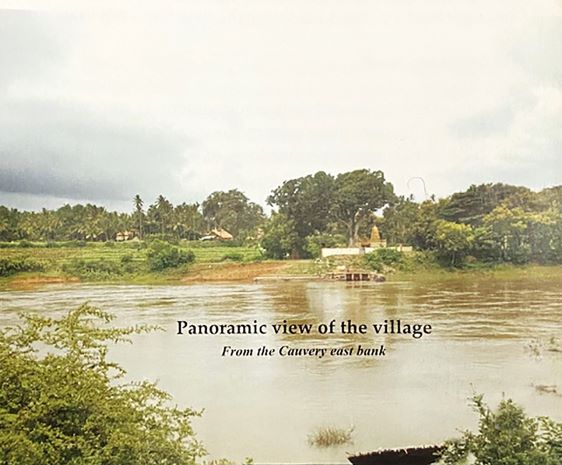 most of the learned had unfortunately succumbed to the deadly spell of plague that battered the peace and living of Rudrapatna in the 1930s – the village had to be restored and re-established to bring back memories of the ‘golden music era.’ Thousands had fled the village in search of food and occupation. The devastation left behind not only silenced the area for a few decades, but most of the documents (Talegari) and scriptures had gone missing. Just as Tiruvaiyaru on the banks of the Cauvery in Tamil Nadu has homage gatherings for Saint Tyagaraja, the restored Rudrapatna too has an annual ‘Sangeethotsava’ in honour of all saint-poets where musiciansassemble for GoshtiGana (group rendering) and solo performances.
most of the learned had unfortunately succumbed to the deadly spell of plague that battered the peace and living of Rudrapatna in the 1930s – the village had to be restored and re-established to bring back memories of the ‘golden music era.’ Thousands had fled the village in search of food and occupation. The devastation left behind not only silenced the area for a few decades, but most of the documents (Talegari) and scriptures had gone missing. Just as Tiruvaiyaru on the banks of the Cauvery in Tamil Nadu has homage gatherings for Saint Tyagaraja, the restored Rudrapatna too has an annual ‘Sangeethotsava’ in honour of all saint-poets where musiciansassemble for GoshtiGana (group rendering) and solo performances.
The pastoral look remains……
Like any other village, a huge Peepal tree welcomes entrants to Rudrapatna and however humdrum the board looks it seems to be throwing about a ‘name and pride!’ The village, in the southern tip of the Arakalgoodu taluk of Hassan District in Karnataka, has been the most important and active placeamongst the 14 villages adjoining the river Cauvery.
Rudrapatna Nodi….
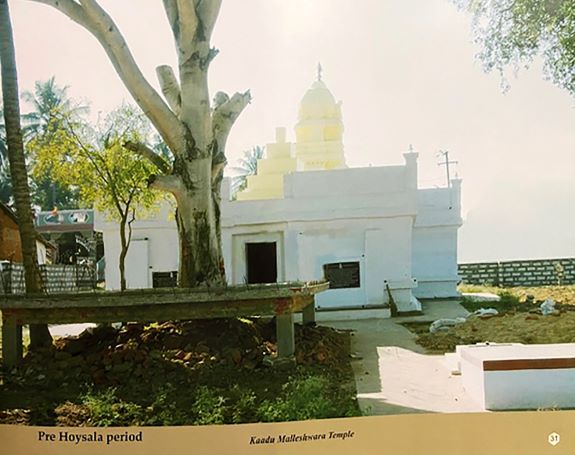 Rudrapatna is 90 kms from Mysore along the Hassan-Chunchanakatte-K.R. Nagar route taking you closer to the vicinities of the Hassan-Madikeri Road, Madikeri being 40 kms from here. From Bangalore, Rudrapatna is 210 kms as we pass through Kunigal, Eriseve, Bellur Cross, Yediyur, Channarayapatna,Holenarasipura, Arakalgoodu, Hulikal, Kaniyooru, Doddamagge, Agrahaara and Ramanathapura to arrive at Rudrapatna.
Rudrapatna is 90 kms from Mysore along the Hassan-Chunchanakatte-K.R. Nagar route taking you closer to the vicinities of the Hassan-Madikeri Road, Madikeri being 40 kms from here. From Bangalore, Rudrapatna is 210 kms as we pass through Kunigal, Eriseve, Bellur Cross, Yediyur, Channarayapatna,Holenarasipura, Arakalgoodu, Hulikal, Kaniyooru, Doddamagge, Agrahaara and Ramanathapura to arrive at Rudrapatna.
From Mysore, we pass K.R. Nagar, Chuchanakatte, Hanasoge and Hanyalu to reach Rudrapatna. There is a profuse of green in the adjoining Sanketi villages too – Ramanathapura, Basavapatna, Bettadapura, Saligrama and Keralapura – that even now appear untouched by urbanites with their commercial intentions.
As we are ushered into pockets of carpet green fields, tree canopies and vegetable gardens that cuddle up small creeks and rivulets in its periphery to finally reach the innards of Rudrapatna, it is even harder to believe that such a rustic setting has had a history of housing incomparable achievers who brought Rudrapatna onto the musical map.
A stroll on the streets of Rudrapatna helps us to further stamp the pastoral character in its temperament, disposition and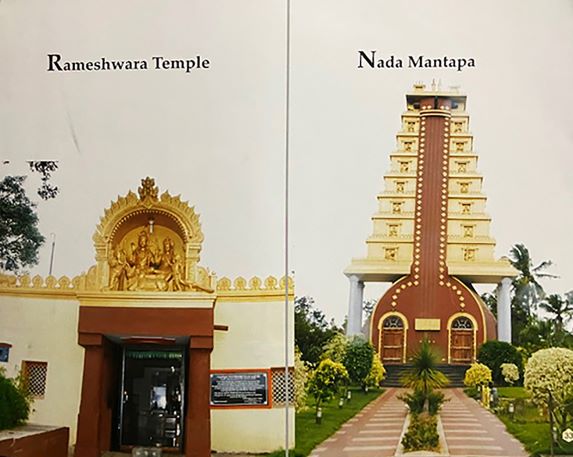 makeup. The innocence and straightforwardness of villagers has most of them stop their areca cutting work or agri-fieldwork to curiously enquire about who has come to their village with cameras and scribbling pads and a whole lot of queries. Shoot a question and almost an entire lot in a group of 30 to 40 will be seen answering one after the other and relating to their ‘village history.’
makeup. The innocence and straightforwardness of villagers has most of them stop their areca cutting work or agri-fieldwork to curiously enquire about who has come to their village with cameras and scribbling pads and a whole lot of queries. Shoot a question and almost an entire lot in a group of 30 to 40 will be seen answering one after the other and relating to their ‘village history.’
It is said that the early 20th Century still had nearly 200 Brahmin families residing in the four streets meant for them. This was out of the 25 streets in the model village known for its domestic wisdom in having a practical model designed for convenience. Interestingly, the village included a Vasthu-friendly set-up that built in good water and drainage facilities.
Says my guide Manjunath, an ex-Karnataka Bank employee, who hails from Rudrapatna, “Those were days when we heard of an absolutely peaceful co-existence here. The village had Brahmins along with people of different castes staying in the streets specifically earmarked for them.” Being conversant with every nook and corner, Manjunath takes me on a ‘RudrapatnaNodi ’(See Rudrapatna) tour that lasts for two days.It is an absolute accord with environment as one walks past herds of cattle, cow-dung cake makers, cycle repairers, barbers on ‘field duty,’ expansive meadows of paddy, 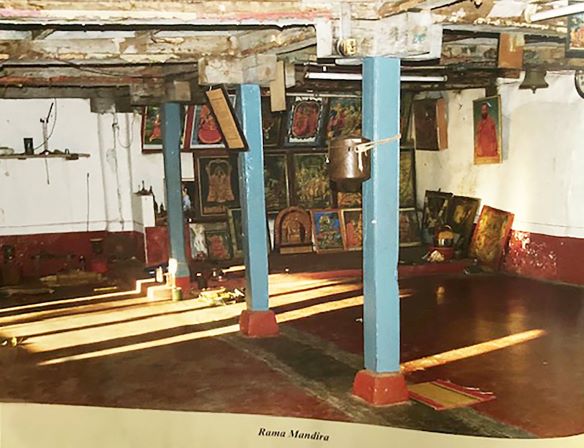 coconut & areca nut groves, ginger, turmeric and ragi fields, water bodies and lush narrow pathways to reach the ebullient Cauvery at the east end of the village.
coconut & areca nut groves, ginger, turmeric and ragi fields, water bodies and lush narrow pathways to reach the ebullient Cauvery at the east end of the village.
“This punyanadhi cuts across caste and religion, rich and poor, educated and uneducated. Its composed and unruffled stream signifies a force for maintaining harmony, forever remaining an ‘elixir of life,’” says a Vedic scholar at the temple adjacent the river.
Rudrapatna is on the upper portion of the right bank of Cauvery. The river here is termed ‘Marudwathi’.According to many Vedic pundits I spoke to, the blustery airstream that the river brings along is believed to transform into gushing waves. Splashing across from the Kodagu district to Hassan, the north to south course of flow in Rudrapatna appears bubbly and effervescent, yet unflustered and musical.
As one sits on the bank of the sacred river to catch the melody in the garrulous flow, it’s the gurgling and splashing at the rocks that seem to fuse in the laya too.Manjunath explains that the two gigantic rocks -ChikkaNandikallu&DoddaNandikallu – have always remained the parameters to evaluate the amount of rain and water flow. As the sacred river provided an ‘open bath’ to everyone from the umpteen villages in the periphery, almost fifty rocks at the Rudrapatna bank were named after one person or the other who were associated with their habitual sacred dips.
On the east bank of the river is the ancient Prasanna Rudra Rameshwara temple with an orchard of tall trees offering an idyllic background in close vicinity. The profuse of brown and black rocks seen at the river addssplendour to the village canvas, even as an assortment of green tints from fields cutting across seem to offer images for postcard portraits.
Tracing its history……
When did Rudrapatna come into existence? There are no evidences available to substantiate this point. As per a stone inscription in front of the village Maarigudi (Maari temple) it is said to belong to the 15th Century – 1482. Another stone in the vicinity of the residential area has an inscription that dates it back to 1357, addressed to ‘Bukkanna Wodeyar who ruled Changanaadu.’
References of ‘Hayagreevapura’ and of its ‘Lord Ramachandra’ also come up in several inscriptions here, making senior people in the village suspect that Rudrapatna was initially called ‘Hayagreevapura.’
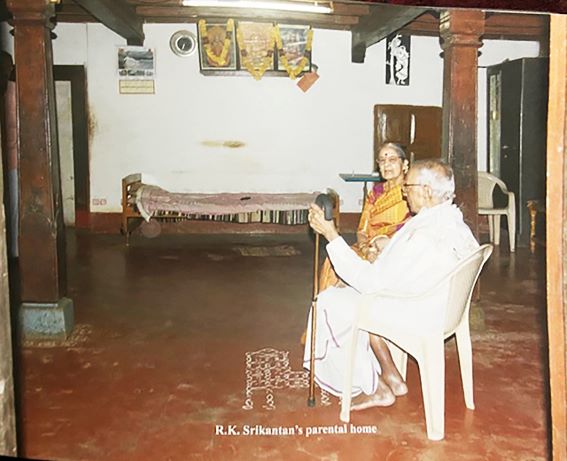 The Rudrapatna native, Bhaskar Avadhani, says in his book ‘San Grama’ (Sangeetha Grama Rudrapatna) that a large section of the elderly are convinced the village was aptly called ‘Hayagreevapura’ as LordHayagreeva is believed to bestow knowledge and Rudrapatna was the only one in the vicinity to be blessed with so many learned men in Veda and Naada. Some even explain that ‘DakshinaVaahini Cauvery’ flowing in the east-end of the village denotes the abundance of knowledge. But according to a stone epigraph noted by the then Chieftain of Rudrapatna, it was only about 600 years ago that the bulk of Shaivites living there wanted to rename the village as ‘Rudrapatna.’ The ancient Prasanna RameshwaraTemple on the river bank must have been the persuasive foundation behind this move. Avadhani notes in his book that even now the Mysore University has a document of these details in its records.
The Rudrapatna native, Bhaskar Avadhani, says in his book ‘San Grama’ (Sangeetha Grama Rudrapatna) that a large section of the elderly are convinced the village was aptly called ‘Hayagreevapura’ as LordHayagreeva is believed to bestow knowledge and Rudrapatna was the only one in the vicinity to be blessed with so many learned men in Veda and Naada. Some even explain that ‘DakshinaVaahini Cauvery’ flowing in the east-end of the village denotes the abundance of knowledge. But according to a stone epigraph noted by the then Chieftain of Rudrapatna, it was only about 600 years ago that the bulk of Shaivites living there wanted to rename the village as ‘Rudrapatna.’ The ancient Prasanna RameshwaraTemple on the river bank must have been the persuasive foundation behind this move. Avadhani notes in his book that even now the Mysore University has a document of these details in its records.
Apart from composers, vocalists and violinists, people’s obsession for playing the veena in and around Rudrapatna is linked to a belief that Lord Eshwara, called SidluMallikarjuna in the nearby Bettadapuravillage temple, is believed to have enjoyed the resonance and reverberations of the Saraswathi Veene!
 Villagers and pundits…….
Villagers and pundits…….
Villagers are rather uncomplicated in their descriptive capabilities. “The place located in front of Keshava temple and backside of Eshwara temple is Rudrapatna,” is their cheerful description! Most temples here display Hoysala and Chola architecture in their makeup. The most ancient KaaduMallesha temple depicts the Hoysala style while the Rudra Rameshwara is a reminder of the Chola approach.
Decades back, Rudrapatna was noted for hosting concerts almost on a daily basis. If music was a Rudrapatna obsession, a routine that went on in many forms on a matter-of-fact basis at courtyard houses, temples and common meeting points in the village, a parallel life was equally visible, replete with rituals, sacred observances and Veda practices.
Dikshitar, Somayaji, Avadhani, Ashtavadhani, Shatavadhani, Ghanapaati, Jataapaati, Jois, Sastry were the varied types of scholars and pundits associated with the diverse aspects of Veda at Rudrapatna. This Veda-Naada amalgam emanated from the Dikshitars’ adept mantra recitations and Somayaajis’ conduct of rituals with the sacred fire (homa). Avadhanis were those who delved into the depths of the shastras. Academic sessions were addressed by Ashtavadhanis and Shataavadhanis. Here, interestingly, while Ashtavadhanis took eight questions at a time from Vidwans and answered in one stretch without losing track of each, Shataavadhanis took the questions by the hundreds, answering each incredulously in serpentine length without restraint!
Ghanapaatis and Jataapaatis added volume to their recital, with their narration reflecting perfect Naada and pronunciation. The Jois brought in the future dimension to the lifestyle, with their famously accuratepredictions.
Photos by Rudrapatnam S. Ramakanth
Photo-Captions in order –1) Rudrapatnam village entrance; 2) Pre-Hoysala period Chennakeshava temple; 3) Panoramic view of the village; 4) pre-hoysalakaadumalleshwara temple; 5) Rameshwara temple and naadamantapa;6)Rama Mandira; 7) Srikantan& his wife in his parental home; 8)13-Pillared house of Thotti Thamappa where music and harikatha happened
to be continued
*********

